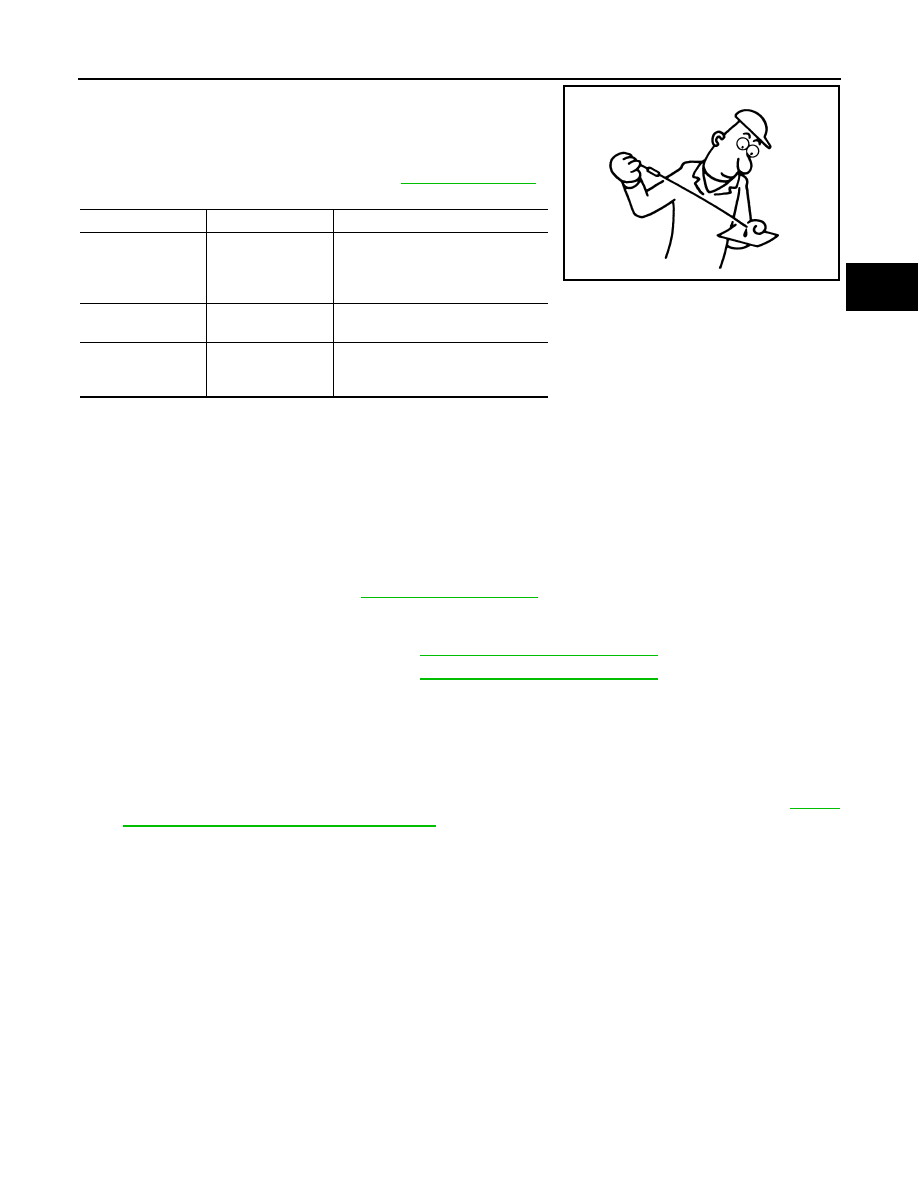содержание .. 1447 1448 1449 1450 ..
Nissan Murano Z51. Manual - part 1449

CVT FLUID
TM-147
< PERIODIC MAINTENANCE >
[CVT: RE0F09B]
C
E
F
G
H
I
J
K
L
M
A
B
TM
N
O
P
Check CVT fluid condition.
• If CVT fluid is very dark or smells burned, check operation of CVT.
Flush cooling system after repair of CVT.
• If CVT fluid contains frictional material (clutches, brakes, etc.),
replace radiator and flush cooler line using cleaning solvent and
compressed air after repair of CVT. Refer to
.
Changing
INFOID:0000000005514094
CAUTION:
Replace a O-ring with new ones at the final stage of the operation when installing.
1.
Remove drain plug from oil pan.
2.
Remove O-ring from drain plug.
3.
Install O-ring to drain plug.
CAUTION:
Never reuse O-ring.
4.
Install drain plug to oil pan. Refer to
.
5.
Fill CVT fluid from CVT fluid charging pipe to the specified level.
CAUTION:
• Use only Genuine NISSAN CVT Fluid NS-2. Never mix with other fluid.
• Using CVT fluid other than Genuine NISSAN CVT Fluid NS-2 will deteriorate in driveability and
CVT durability, and may damage the CVT, which is not covered by the warranty.
• When filling CVT fluid, take care not to scatter heat generating parts such as exhaust.
• Sufficiently shake the container of CVT fluid before using.
• Delete CVT fluid deterioration date with CONSULT-III after changing CVT fluid. Refer to
"CONSULT-III Function (TRANSMISSION)"
6.
With the engine warmed up, drive the vehicle in an urban area.
NOTE:
When ambient temperature is 20
°
C (68
°
F), it takes about 10 minutes for the CVT fluid to warm up to 50 to
80
°
C (122 to 176
°
F).
7.
Check CVT fluid level and condition.
8.
Repeat steps 1 to 5 if CVT fluid has been contaminated.
Fluid status
Conceivable cause
Required operation
Varnished (viscous
varnish state)
CVT fluid becomes
degraded due to
high temperatures.
Replace the CVT fluid and check the
CVT main unit and the vehicle for
malfunctions (wire harnesses, cool-
er pipes, etc.)
Milky white or
cloudy
Water in the fluid
Replace the CVT fluid and check for
places where water is getting in.
Large amount of
metal powder mixed
in
Unusual wear of
sliding parts within
CVT
Replace the CVT fluid and check for
improper operation of the CVT.
ATA0022D
CVT fluid
: Refer to
TM-179, "General Specification"
Fluid capacity
: Refer to